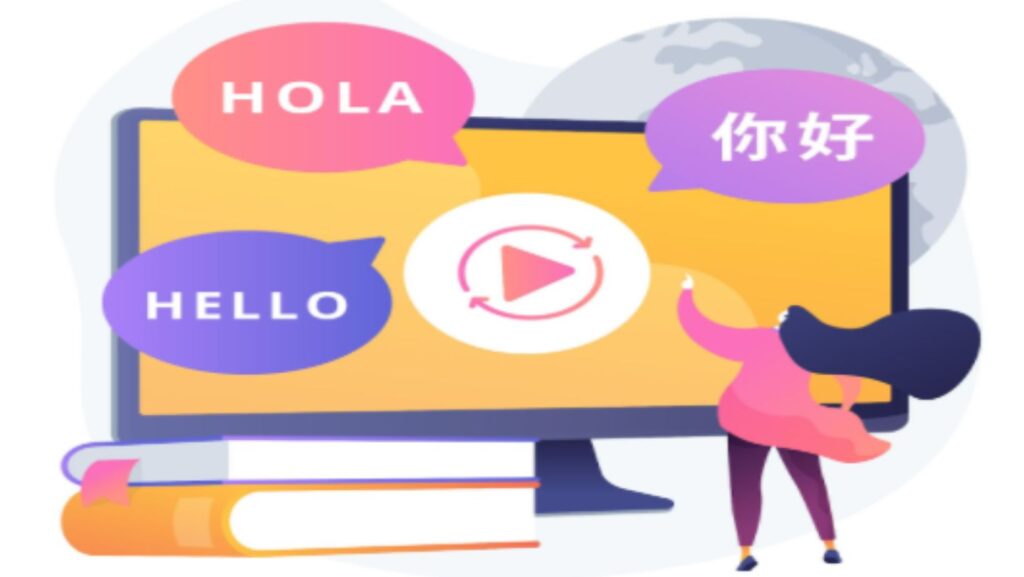In today’s fast-paced digital landscape, video content is a dominant tool for engaging audiences. Streaming video ads are increasingly leveraged by businesses to deliver personalized messages, boost brand visibility, and enhance marketing outcomes. As globalization advances, companies are focusing on mastering strategies that ensure long-term growth and profitability on a global scale. Insights into diverse consumer preferences, coupled with engaging content, have become key to maintaining relevance in international markets. Among these strategies, the use of video translation has emerged as a game-changer, enabling businesses to connect with multilingual audiences effectively.
Integrating an online video translator into your business strategy not only fosters inclusivity but also ensures that your message reaches a broader demographic. This article explores how AI-powered video translation fits seamlessly into business strategies, empowering organizations to expand their reach and impact.
Why Video Translation Matters in a Global Strategy
Expanding your business to international markets requires a deep understanding of cultural nuances and language barriers. Video content, being visually and emotionally engaging, offers a powerful medium for communication. However, without translation, the potential to connect with non-native audiences remains limited.
When you translate video content into multiple languages, you enable your brand to communicate directly with your audience in their native tongue. This fosters trust, builds emotional connections, and improves engagement. For instance, companies targeting regions such as Europe or Asia can use AI-powered tools to ensure their messaging resonates across different cultural contexts.
By integrating AI tools into your video strategy, you save time and resources that traditional manual translations often demand. Whether it’s educational videos, promotional campaigns, or instructional content, AI-driven solutions help you maintain consistency while enhancing accessibility.
The Role of AI in Video Translation
AI has transformed many industries, and video translation is no exception. With the rise of AI-powered solutions, you can translate and localize videos with greater efficiency and accuracy. AI eliminates much of the manual effort required in traditional translation workflows, offering faster turnarounds and reducing costs.

An online video translator powered by AI leverages advanced algorithms to understand context and deliver precise translations. Additionally, these tools can adapt to linguistic subtleties and cultural nuances, ensuring that your content does not lose its meaning in translation.
For businesses looking to penetrate global markets, AI-enabled video translation aligns perfectly with strategic objectives. It empowers you to:
- Reach new audiences without having to create content from the start.
- Enhance your brand’s credibility by providing localized content.
- Improve user experience through accessible and relatable communication.
Key Business Applications of Video Translation
- E-Learning and Training
For companies offering e-learning solutions or internal training programs, video translation enables seamless knowledge sharing. By translating training videos into multiple languages, you ensure all employees, regardless of location, receive the same level of understanding and instruction.
- Marketing Campaigns
Your marketing campaigns can achieve a global presence through multilingual video ads. Video translation ensures your promotional content resonates with diverse audiences, increasing click-through rates and conversions.
- Customer Support Videos
Tutorials, FAQs, and support videos play a significant role in customer satisfaction. By translating these resources, you improve the accessibility of your support channels, fostering loyalty among non-native speakers.
- Product Launches and Demonstrations
When launching a product in new markets, translated product videos enable potential customers to grasp key features and benefits effortlessly, reducing cultural and linguistic barriers to entry.
How to Implement AI Video Translation in Your Strategy
Integrating video translation into your strategy involves several considerations:
- Define Your Target Audience
Identify the regions and demographics you wish to reach. This helps you prioritize languages and tailor your translations to suit cultural preferences.
- Choose the Right Tools
Invest in an online video translator that aligns with your business needs. Ensure the tool supports a variety of file formats, languages, and localization features.
- Focus on Localization
Translation alone is not enough; you need to localize your content. This means adapting graphics, tone, and even video subtitles to align with cultural contexts.
- Leverage AI for Scalability
AI-powered solutions allow you to scale your efforts efficiently. From small businesses to multinational corporations, AI makes multilingual communication accessible to all.
Challenges to Consider
While AI tools offer significant advantages, it’s essential to be aware of challenges such as:
- Accuracy of Complex Translations: AI may struggle with idiomatic expressions or highly technical content, requiring additional human oversight.
- Cultural Sensitivity: Some messages may be interpreted differently across cultures, emphasizing the need for thorough reviews before publishing translated content.
However, the benefits of AI video translation far outweigh these challenges, making it an indispensable part of modern business strategy.
A Practical Example: Video AI Apps
Innovative apps like a video AI app help you achieve seamless video translation and localization. These apps use AI to streamline processes, offering features such as real-time transcription, automated subtitle generation, and multi-language support. For example, if your business frequently creates video content for social media, integrating such tools can drastically improve efficiency and consistency.

These applications not only simplify the process but also allow businesses to focus on creative aspects, driving greater value from translated content.
The Future of Video Translation in Business Strategy
As globalization continues to influence business dynamics, video translation will play an increasingly critical role in shaping strategies. Companies that embrace AI-powered tools stand to benefit from enhanced operational efficiency and broader market reach.
With evolving AI technologies, the future of video translation holds even more promise. Innovations such as real-time translation and voice cloning are set to redefine the way businesses communicate with global audiences.
By using an online video translator, you position your brand as inclusive and forward-thinking, meeting the needs of diverse audiences and staying ahead of competitors.
Conclusion
Incorporating video translation into your business strategy is no longer optional—it’s a necessity for companies aiming for global success. Whether you’re looking to expand into new markets, improve customer experience, or boost engagement, AI-powered solutions can make a significant impact.
The use of an online video translator allows you to break language barriers, ensuring your message resonates across different regions and cultures. By leveraging these tools, you create opportunities for growth, increase profitability, and secure long-term success in an interconnected world.
As businesses continue to innovate and adapt, video translation will remain a cornerstone of effective communication, helping you build lasting relationships with your global audience.

